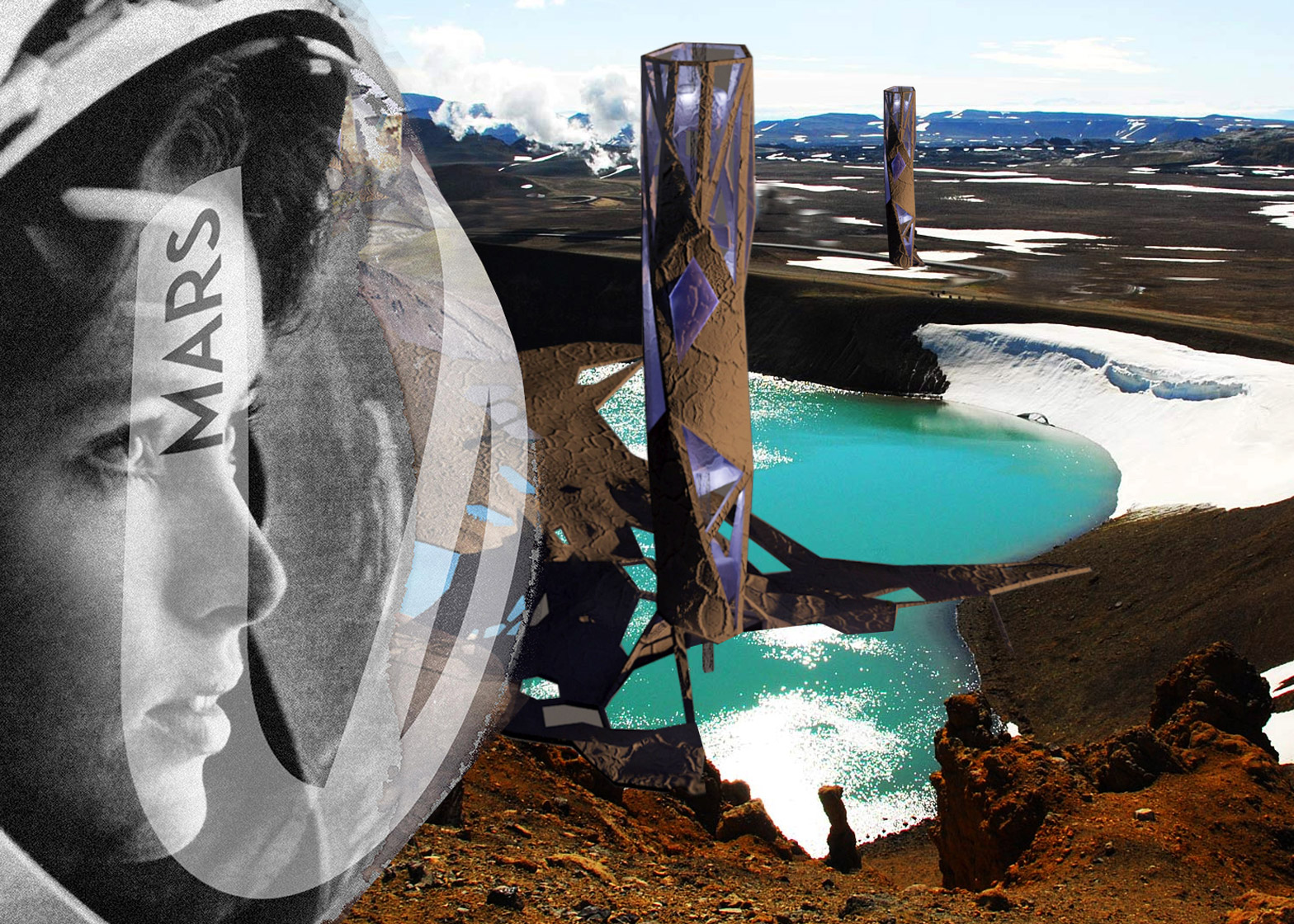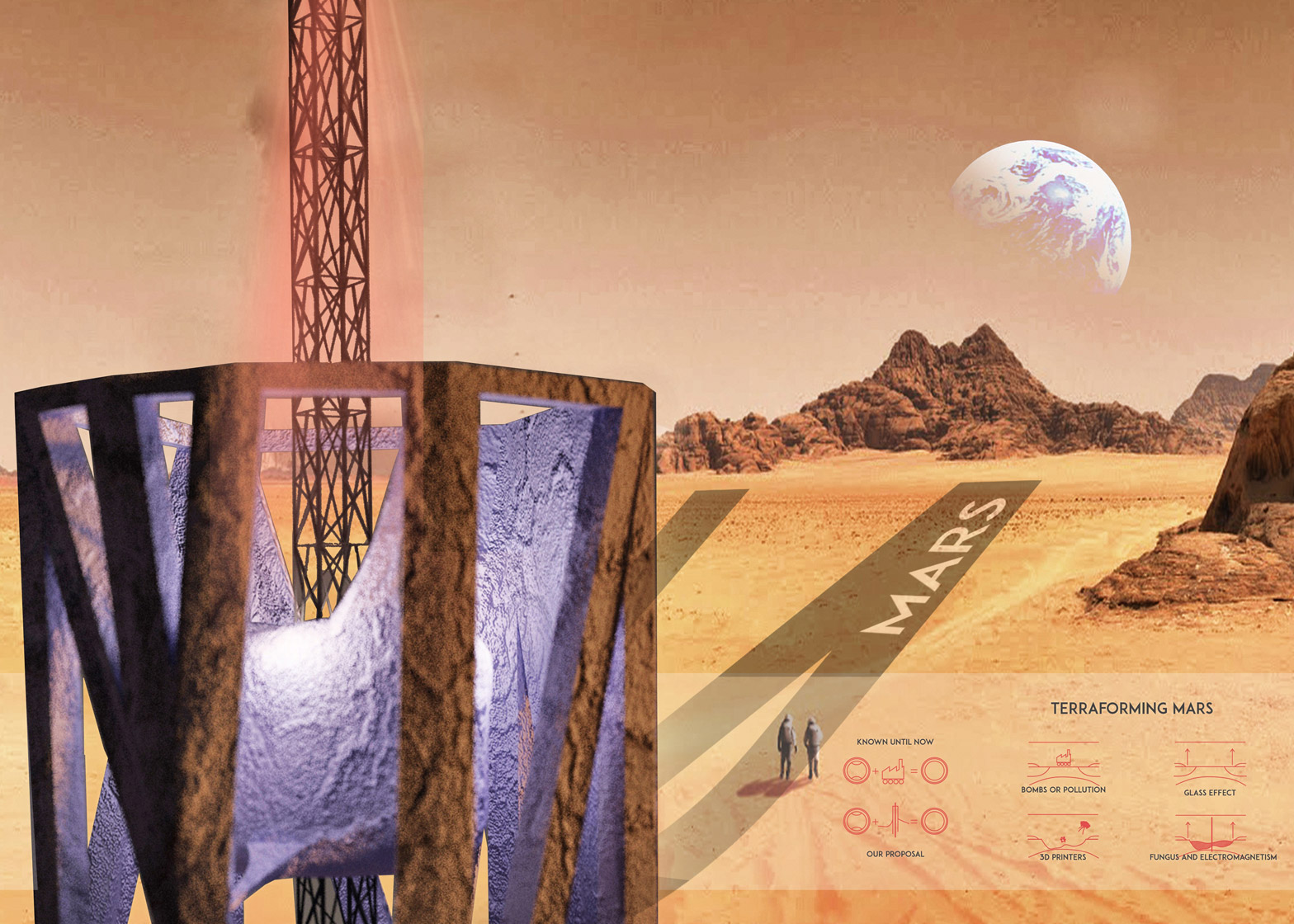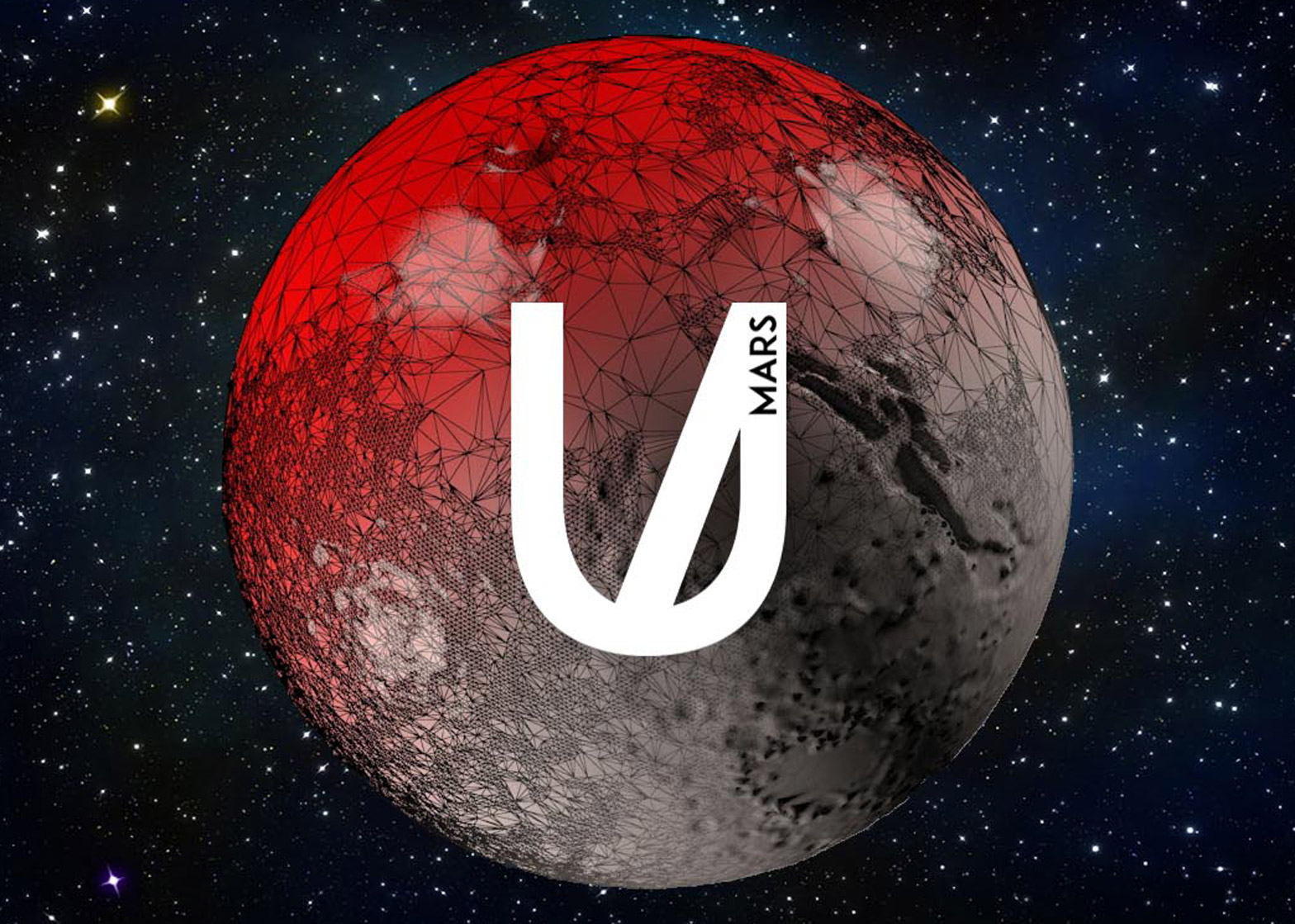Spanish architect Alberto Villanueva's Mars Utopia concept would see the planet transformed into an inhabitable environment using towers formed by bacteria (+ slideshow).
Villanueva, who works at Idea Architecture Office, created the project while completing a masters in Environment Design at London's Ravensbourne College.
"As an architect I am worried about the overpopulation issue," he told Dezeen. "I was studying how the most populated cities around the world are growing non-stop."
"At the same time I realised that at least 30 per cent of territories are in extreme environments and I wanted to understand how, with my responsibility as an architect, I could think in new ways to build in these areas," he added.
Choosing Mars as "the hardest scene", Villanueva created a concept that would use the planet's newly discovered frozen water and soil as building materials.
3D printers could be sent to selected craters that hold water beneath the surface, where they would build structures using Mars' soil as a material. These could then collect energy from electromagnetic fields in the surrounding areas to melt the crater ice.
Over a period of six months the towers would disintegrate, and be replaced by new bio-luminescent structures that could be printed using fungi and bacteria feeding off the newly melted water.
These towers would then convert the planet's carbon dioxide into oxygen. The architect estimates that enough will have accumulated after two months to "form and give consistency to the small atmospheric layer of the planet."
After this period, Villaneuva believes there will be enough oxygen for future inhabitants to breathe on the planet.
"In this case the building as an organic element fades after about five years, deleting any footprint on the planet and maintaining a living atmosphere," he said.
"It will be the right time to create a new architecture to colonise," he added. "As you can see the project offers an alternative to the 'bombs' of Elon Musk, the buildings on the surface or construction of domes with controlled environments."
The architect also suggests that Hawaii or Australia could be used as test locations for the Mars Utopia concept.
Other architects proposed ways to form homes on the planet through NASA's 3D Printed Habitat challenge. A shortlist of 30 designs was selected, with Clouds AO and SEArch's shark fin-shaped Ice House winning first place.
Previously, Foster + Partners unveiled designs for a NASA Mars settlement that could be 3D printed by a team of semi-autonomous robots, and a team of scientists and architects have imagined a bubble-shaped habitat for the red planet.






